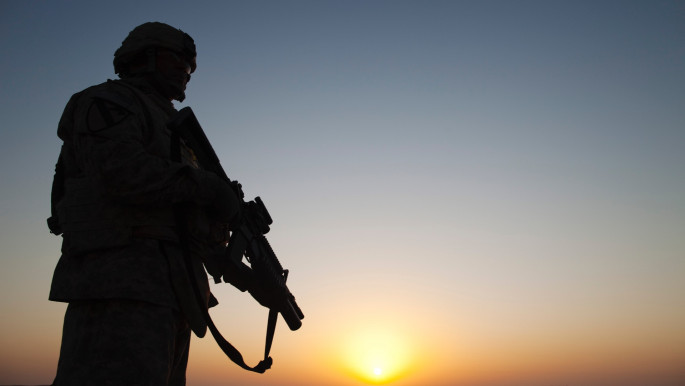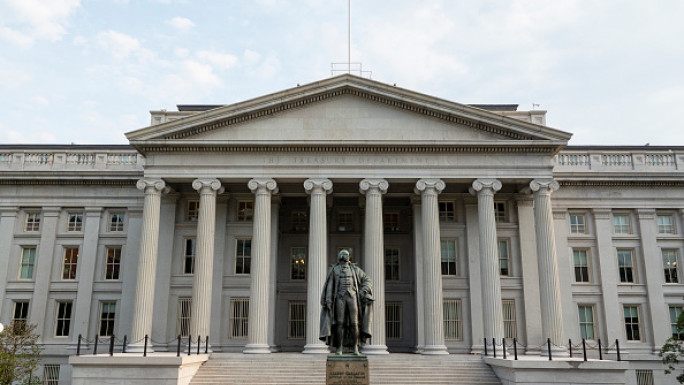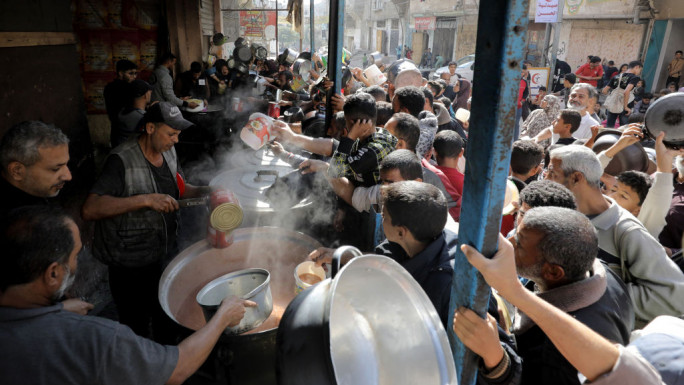
Forty years later, Tehran's weaponisation of sectarianism in the Iran-Iraq war still haunts the region
While sectarianism and ethno-religious violence are seen as the tragic norm in today's Middle Eastern war zones and political conflicts, their contemporary roots lie in the blood, mud, sand, and snow of the battlefields of the Iran-Iraq war.
Secularism clashing with Shia Islamism
Since Iraq's independence from Britain in 1932, its relations with Iran have been strained, particularly over the strategic Shatt al-Arab waterway that flows southeast through Iraq before discharging into the Arabian Gulf.
Once Iraq formally became a republic in 1958 after the bloody 14 July Revolution that saw the Hashemite royal family killed and dragged through the streets on the orders of Abd al-Karim Qasim, an anti-monarchical and anti-British nationalist 'Free Officer', tensions steadily increased with Iran over the Shatt.
 |
The eight-year long conflict scarred the region and set events in motion that would play out in today's Middle East |  |
Tehran – then under the imperial, secular and pro-Western Pahlavi dynasty – argued that the Shatt should be split equally between the two countries while Baghdad under various governments and political ideologies vehemently disagreed and demanded full sovereignty over navigation rights.
This led Shah Reza Pahlavi to begin to posture on Iraq's borders, wielding his American trained and equipped military as a fearsome stick with which to cow his Arab neighbours. The Shah invaded three islands belonging to the United Arab Emirates (UAE) in the Arabian Gulf, islands that are still under Iranian control today.
 |
|
| The Iraq Report: US military drawdown will embolden Iran's proxies |
However, and most damagingly, Iran began to arm and fund Iraqi Kurdish separatists under Mullah Mustafa Barzani, the father of Massoud Barzani who was forced to stand down from the presidency of the Kurdistan Regional Government after the federal authorities crushed his independence bid in 2017.
The Kurdish militant movement bled the Iraqi army and eventually forced Baghdad to come to the negotiating table and sign the Algiers Accords of 1975, ceding over half of the Shatt to the Shah.
While the Shah was a secular nationalist, his overthrow in 1979 at the hands of Ayatollah Ruhollah Khomeini, a hardline Shia cleric who advocated a theocratical regime, changed the dynamics of the relationship between the two countries.
Saddam Hussein, now president of Iraq, was also a self-proclaimed secular nationalist. While he despised the Shah, they had a common frame of reference and he could somewhat rely on him to stick to agreements signed between the two parties, including the aforementioned accords.
Initially, after the overthrow of the Pahlavi dynasty, Saddam, a Sunni Arab, sent a congratulatory cable to the newly enthroned Khomeini, wishing him success and confirming that Iraq would uphold any agreements with the previous regime, saying he looked forward to developing a working relationship with the new authorities in Tehran.
 |
The Iran-Iran War was filled with instances of severe brutality, possibly some of the worst since the Second World War |  |
In response, and likely due to bitterness that Khomeini had been expelled from Iraq as part of the Algiers Accords deal with the Shah, Khomeini used words that are understood in cultures rooted in Islam to mean that Saddam was a heretic: "Peace be upon those who follow true guidance".
What followed was a series of attacks on Iraqi diplomats by Iran-backed Shia Islamist groups, including the Dawa Party that would eventually play a pivotal role in Iraqi politics after Saddam's overthrow in 2003. Foreign Minister Tariq Aziz barely survived an assassination attempt in April 1980 that was most likely backed by the Iranian regime.
Iran also started shelling Iraqi border towns and cities in early September 1980 leading to civilian fatalities and increasing tensions. This is why, and to this day, many Iraqis consider the start of the war to have been triggered not by Saddam's invasion of Iran but by the repeated Iranian artillery strikes on Iraqi territory that began on 4 September.
Old hatred, modern violence
The Iran-Iran War was filled with instances of severe brutality, possibly some of the worst since the Second World War. Religious zealots in the then-newly inaugurated Islamic Revolutionary Guard Corps (IRGC) would urge their troops to attack entrenched Iraqi positions with little to no support from armour, aircraft, or artillery.
 |
|
| Read more: Iraq's reign of fear: Inside the violent power struggle killing Basra's activists |
The result was that these human wave attacks would result in a ghastly loss of life as men were repeatedly hurled up against heavily fortified positions to be ground down by machine gun fire, artillery barrages, and mobile armoured counterattacks that made short and bloody work of light infantrymen with no defences against tanks.
After such catastrophic losses in 1982, the Iranians, now on the offensive, tried to invade Iraq and conquer the southern oil-rich city of Basra at the cost of almost 30,000 men. Khomeini also leveraged his religious and spiritual leadership and began to recruit Shia fighters from Pakistan and Afghanistan.
Iraqi intelligence from the period, working with their military attache in Kabul, estimated that some 45,000 Afghani Shia had joined the Iranian "jihad" against fellow Muslims, most of whom were Iraqi Shia themselves although a sizeable number were also Sunnis.
Undoubtedly, this has parallels today, with the Afghani Shia Fatemiyoun Division and the Pakistani Shia Zainabiyoun Division fighting under the direction of the IRGC in Syria on behalf of the Syrian Baathist regime of Bashar al-Assad.
 |
The origins of the Iran-Iraq War and the events of that conflict provide an instructive example of why the Middle East is calibrated in the way that it is today |  |
Part of the Iranian aim of attempting to capture southern Iraqi provinces was to co-opt people among the conservative Shia Arab population there to overthrow the Baathist regime and to replace it with a government more friendly to Iran and its ambitions of exporting its revolution.
Following the American-led invasion of 2003 and the toppling of the Saddam Hussein regime, Iran has gone a long way toward achieving this aim.
Indeed, tvery election that has taken place in Iraq since then has heavily involved candidates with long and lasting links to Iran, even if they are domestically rivals. For instance, Tehran not only has a decisive level of control over the heavyweight Dawa Party, but it now also is heavily entrenched within the new military-political class that has emerged since the war against the Islamic State (IS) group began in 2014.
The Popular Mobilisation Forces (PMF), or Hashd al-Shaabi in Arabic, was formed as an umbrella organisation to gather all the disparate Shia militias under one nominal military command to fight back against IS.
The PMF, already staffed by Iraqi militants who have been tied to Iran for decades, including the Badr Organisation's Hadi al-Amiri who was filmed fighting for Iran during the Iran-Iraq War, were involved in numerous sectarian atrocities that may amount to war crimes.
 |
|
| The Iraq Report: Iraq still in chaos 17 years after US invasion |
Utilising IS as a cover, PMF affiliated militias perpetrated gross human rights violations against Sunni Arab Iraqis. Areas near Baghdad, and in Anbar, Diyala, Salahuddin, and Nineveh governorates with majority Sunni Arab populations were razed to the ground and have yet to be rebuilt despite the war ending almost three years ago.
Despite this, and due to Iran's leverage over much of Iraq's political scene, the Iraqi parliament voted in favour of merging the PMF into the command structure of the Iraqi armed forces, but as a separate branch.
Parallels were drawn between how the regular Iranian army, the Artesh, operated separately to the IRGC. The PMF was therefore being groomed to become the Iraqi version of the Revolutionary Guard, and a military unit firmly under the sway of the IRGC's command structure. PMF militants fight under the command of the IRGC in Syria, for instance.
Under such an environment, Iran has successfully and finally exported its Islamist revolution. Not only does it now have a commanding and dominating influence over Iraq, but it is now heavily entrenched in Syria and also Lebanon through its proxy Hezbollah that wields substantial control over Lebanese politics.
Iran is also now present in Yemen, has threatened Bahrain and other Arab Gulf powers, and is increasingly expanding its presence and power, destabilising the region and in particular Iraq.
The origins of the Iran-Iraq War and the events of that conflict provide an instructive example of why the Middle East is calibrated in the way that it is today. Power dynamics that have existed for decades between the Islamic Republic of Iran and its neighbours all extend back to that fateful war.
The future, however, is not set in stone. While it appears clear that Iranian power extension through the largely Sunni Arab Middle East will not dissipate any time soon, there is now increasing resistance to it.
Where people once applauded Iranian proxies such as Hezbollah in its conflicts with Israel, they now see ulterior motives beyond the usual "Axis of Resistance" discourse, and many see Iran as a threat on par with Israel.
Whatever the solutions to a more peaceful, stable, and prosperous Middle East are, they will not be reached without a proper understanding of the causes behind the current conflicts. For that understanding, one must start at the beginning – the Iran-Iraq War.
Tallha Abdulrazaq is a researcher at the University of Exeter's Strategy and Security Institute and winner of the 2015 Al Jazeera Young Researcher Award. His research focuses on Middle Eastern security and counter-terrorism issues.
Follow him on Twitter: @thewarjournal
Opinions expressed in this article remain those of the author and do not necessarily represent those of The New Arab, its editorial board or staff.





 Follow the Middle East's top stories in English at The New Arab on Google News
Follow the Middle East's top stories in English at The New Arab on Google News


